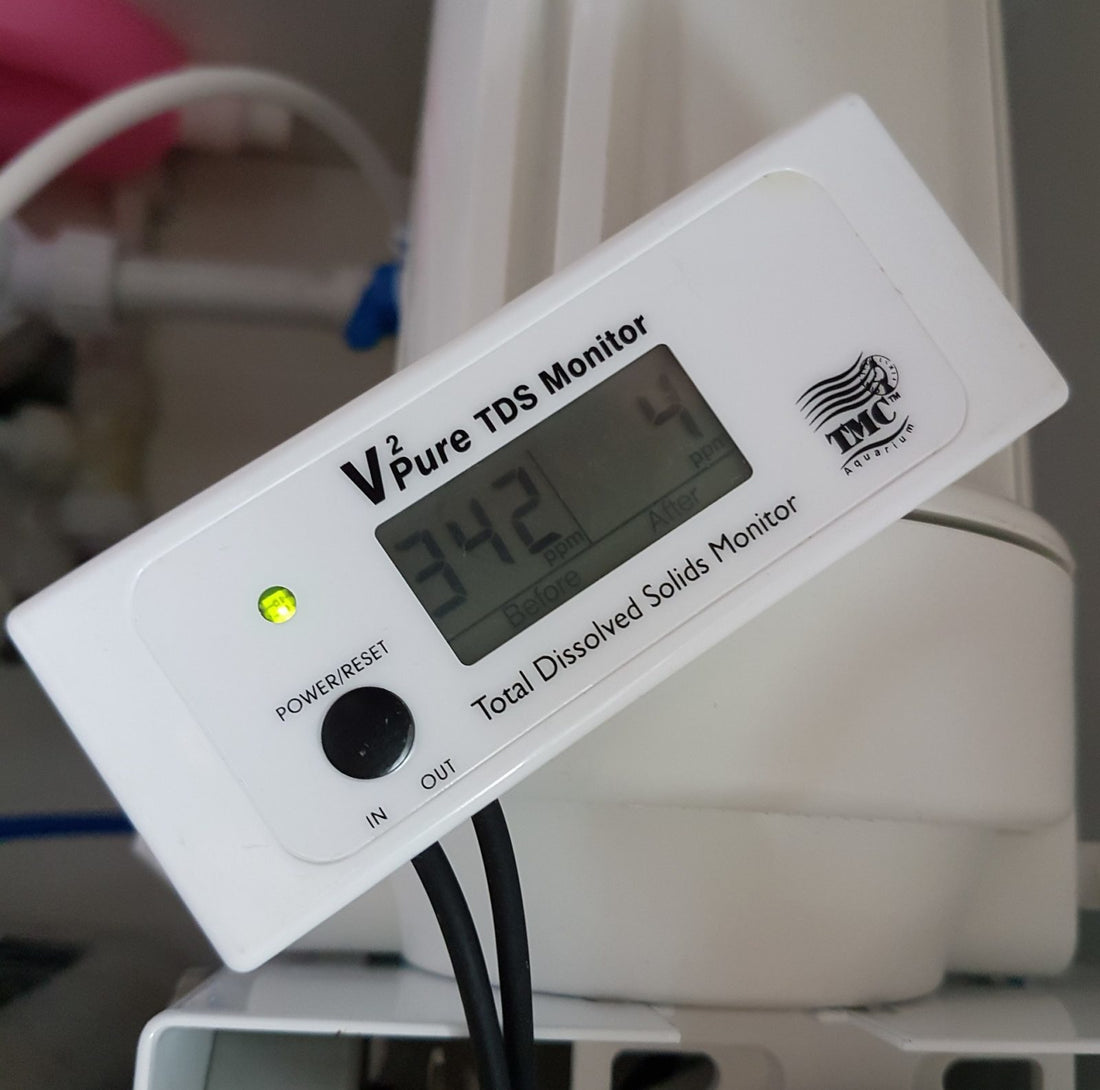What is TDS?
What is TDS in tap water? Is TDS a measure of water quality? Is it true that high TDS in tap water is bad for your health? What does WHO (the World Health Organisation) say about TDS in tap water? Many water amateurs and companies that want to promote water filters for tap water use TDS (Total Dissolved Solids) as the key water quality testing method. The reason is that it's very easy and cheap to measure. The problem is that this is not a good measure and it's very limited in terms of water quality parameters. In this article we will straighten out the facts and debunk the myths about TDS in tap water.
TDS comprise of inorganic salts and small amounts of organic matter that are dissolved in water. The principal constituents are usually the cations calcium, magnesium, sodium and potassium and the anions carbonate, bicarbonate, chloride, sulphate and, particularly in groundwater, nitrate. TDS is expressed in units of mg per unit volume of water (mg/L) or also referred to as parts per million (ppm). Typically, natural mineral water and tap water can have a TDS value of 100-300 mg/l. In areas with high concentration of minerals, the natural tap water could however be considerably higher. Water filtering technologies such as reverse osmosis, water distillation and ion exchange can reduce this to close to zero, whereas active carbon filters will not reduce TDS.
What level of TDS does the drinking water have to have?
Just like most bottled mineral water contains higher TDS (e.g. Evian 300 mg/l; San Pellegrino 850 mg/l), this can also be positive for tap water. WHO (the World Health Organisation) and most other institutions that regulate water quality consider values up to 500 mg/l to be entirely safe and 2,000 mg/l safe for temporary consumption in case no other water is available. WHO states that there is no direct link between TDS and water safety. For values below 1000 mg/l there is no scientific evidence that TDS makes any difference, and no health impact has been identified below 2,000 mg/l. To complicate this a little bit there is however evidence that high concentrations of specific constituents such as calcium may have an impact, but TDS is a very vague indicator of this, since it does not specify the different parameters that constitute the final number. For example, tap water in Los Angeles varies between 200-600 mg/l, Paris 200-300 mg/l, Stockholm 73-93 mg/l, London 260 mg/l... and all of them are considered to have safe and healthy drinking water.
How does high TDS in tap water impact taste?
In a study by the World Health Organization, a panel of tasters came to the following conclusions about the preferable level of TDS in water (mg/l):- Less than 300: Excellent
- 300 - 600: Good
- 600 - 900: Fair
- 900 - 1,200: Poor
- Above 1,200: Unacceptable
So why do people say TDS in tap water is bad?
Why do water filter companies and amateurs use high TDS as an argument for water filtration? The simple reason is that it's cheap and easy to test. A TDS meter can be purchased online for about $50 or less, and then anyone can easily perform a test in seconds at home. Real tests that measure chlorine, pesticides, heavy metals and pharmaceuticals, which are important to determine water quality, require sophisticated and expensive labs. Your local water company tests the water every day for contaminants and is obliged to provide a water quality report, at least, yearly. This provides a scientific analysis of the water quality. Another reason is that it's a great argument to sell Reverse Osmosis filters that can reduce TDS significantly.
What do I do to get accurate water quality testing?
In conclusion, water quality testing is important, but think twice before using TDS as an indicator or complement it with other technologies. Generally, the belief that high TDS is bad is based on misconceptions about the negative health impact of minerals in the body. If you would like to do a test yourself in order to assess potential leakages of heavy metals from the pipes of your building (such as calcium, magnesium, chlorine, nitrate, sulfate, fluoride, sodium, copper or nickel) you can purchase a detailed DIY testing kit from Tap Score here (US) or one of the many other water quality testing labs.
Conclusion about TDS in tap water
- TDS is primarily a measure of mineral content and salts in tap water
- High TDS does not mean the water is unsafe to drink but it does impact taste
- Many mineral water brands have TDS above 500 mg/L and are considered healthy to drink
- RO filters will remove all the healthy minerals from the tap water





